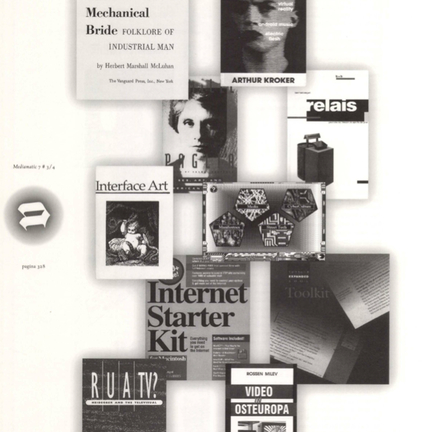His new book Video in Eastern Europe is an adaptation of the dissertation he wrote under Siegfried Zielinski, author of Audiovisions and The History of the VCR (1986). Staying close to Zielinski's pragmatic approach, Milev has written a lucid and wide-ranging overview of the phenomenon of video, ranging from illegal screenings to video stores, the manufacture of 'communist' VCRS, political documentaries and video art.
Video is still a status symbol and luxury item in the East, a visible testimony to one's freedom to decide what to watch. The laborious and obscure introduction of video under 'real existing' socialism, with the illegal importation of porn, horror, B- and C- movies, and ideological condemnation, in 1985 turned into an effort to establish a state monopoly, while gay video consumption skyrocketed. The tempestuous revolutionary period, with its S-VHS activism and manipulation, is giving way to early-90s wild-west capitalism, with economic crises, mafia, nationalism and war, and exposing the convergence between the video black market and the official one.
Fortunately, Milev refrains from indulging in sweeping generalizations, since audio-visual media vary greatly between countries. While Hungary, Poland and Yugoslavia had productions and festivals in the 1980s, in Romania, Bulgaria, the DDR and even Czechoslovakia, where it was difficult to get hold of equipment and impossible to organize screenings, home viewing and the black market flourished. Milev calls this 'collective video consumption.’ The Romanians are video fanatics and still have a large illegal tape network (presently because of copyright), though until the end of 1989 domestic production was confined to the wedding-documentary genre. Milev is eloquently silent on the situation in his own average-Balkan-country, Bulgaria, where amidst poverty and slow reform video is coming into its own along with cable, satellite, local and commercial television.
Sensibly, Milev leaves the complex and shadowy issues around media legislation out of his argument. He restricts himself instead to briefly describing the state of video art in various countries – the Russian 'parallel film,' familiar names Iike Body, Abramovic and Rybczynski. Milev proves well-informed about countries like Albania. Without being derogatory or overly optimistic he takes stock of the present situation: the copyright issue; a conservative climate sick of anything that seems avant-garde: a call for a local spiritual art as against 'Western technological colonialism': the increasing Turkish influence: the dramatic implosion of Yugoslav video and video art: the new media departments in the art schools: independent TV stations and video production centers. lt is time now for art criticism and media theory to intervene in the power struggle raging beneath this surface so that an experimental and troublesome media culture may flourish. Rossen Milev has the knowledge it takes, if he can find the courage to break out of convention. After video, what Eastern Europe needs next is merciless, thorough and ironic media criticism.
Translation Laura Martz
Milev
Video in Osteuropa
Rossen Milev, editor-in-chief of the Sofia-based English-language magazine Balkan Media, wrote a book in German on the role of television during Bulgaria's transitional period between 1989 and 1991.
